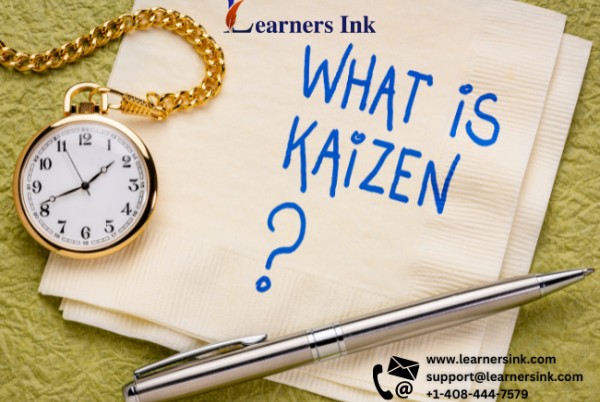


Kaizen is a management philosophy with roots in both US and Japanese management practices. It comes from the Japanese words "Kai" meaning school and "Zen" meaning wisdom. Everyone is encouraged to come up with small improvement suggestions on a regular basis. Kaizen is a system of improvement that in Japan includes both home life as well as business improvements. Kaizen Management has important tool as Kaizen Events, which is also referred to as Kaizen Blitzes - are three to five days focused events during which a cross-functional team studies a process to identify waste and implements improvements to eliminate the root cause of the waste, generating rapid and often far more dramatic results than those typically obtained from traditional improvement methods. While originally embraced by manufacturing, Kaizen Events are now being used by industries of all types, and in organizations of all sizes to implement rapid change.
A properly planned and executed event typically provides measurable improvements ranging from 30-80% in one or more of the following six aspects of organizational performance:
Another advantage of Kaizen management is that they are typically structured as low-cost activities. The phrase "creativity before capital" describes the general spirit of a Kaizen Event, where the Kaizen Team is chartered with a measurable objective to eliminate process waste without expending much, if any, capital. This model holds several advantages over the all-too-common occurrence of organizations that prematurely jump to costly solutions, such as automation, to a process problem before they've eliminated the fundamental waste that's causing the problem. In cases like these, organizations are left with a faster, unsound process and a budget bleeding from ill-spent resources.
The organizational impact and magnitude of results achieved from a Kaizen Event is dependent on several keys to success:
Leadership Commitment in Kaizen Management
Holding a successful Kaizen Event begins with leadership commitment. Leaders must have a basic understanding of the Lean approach to continuous improvement, buy-in to the philosophy and commitment to make themselves and resources from across the entire value stream available to the Kaizen Team as needed.
For a successful Kaizen Event, the team members must be 100% dedicated to the Event, sequestered from their daily work. Back-ups must be put in place for team members who carry out important functions that can't be placed on hold for the duration of the Event. The structured degree of focus and team commitment is one reason why Kaizen Events are so effective.
The team must also be empowered to make its own decisions - after, of course, consulting with appropriate resources, considering legal and regulatory issues, etc. To help the leadership gain comfort with this arrangement, the Kaizen Team typically holds several briefings throughout the Event with the executive sponsor and the leaders of the upstream and downstream areas that will be impacted by the change. These meetings enable the leadership to ask the "what if's" associated with the proposed process changes and provides the Kaizen Team the opportunity to educate the leadership on process discoveries and reasons for the proposed changes.
Workforce Communication Approach
Holding regular Kaizen Events creates a cultural shift in organizations whereby implementing rapid change becomes the way the organization operates on a daily basis. But in the transition period between operating the traditional way and embracing the Kaizen approach, the workforce needs to be adequately prepared for Kaizen Events.
The most effective way to educate the workforce on the Kaizen Events is to provide training on the Lean Enterprise approach to continuous improvement, particularly if the training includes a simulation that clearly illustrates the benefits. The greater the understanding of the workforce on the kaizen approach, the more support the organization will receive for its efforts. Greater support for the approach yields greater organizational results.
Before each Kaizen Event, communication should go out to the entire workforce letting them know which process is being improved, soliciting ideas for change, and asking that they do whatever it takes to assist the Kaizen Team should they ask for help. The rapid and intense nature of Kaizen Events requires this level of input and teamwork from all involved.
The best way to understand Kaizen training management is to compare it to traditional, Western management practices. Kaizen training ppt presentation provides more information that is based on the concept of process-oriented thinking.
Learners Ink 2019 - | All Rights Reserved